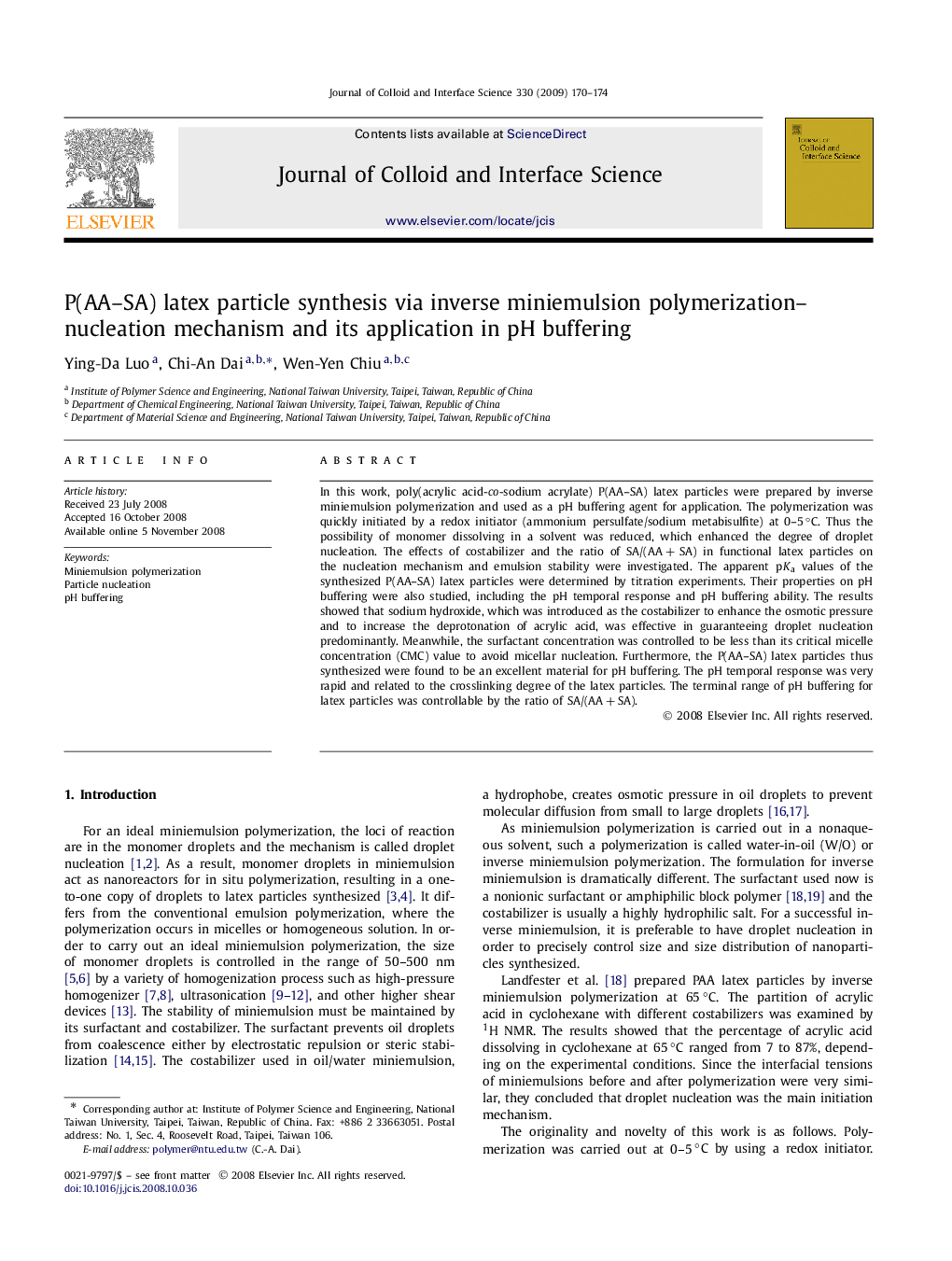| کد مقاله | کد نشریه | سال انتشار | مقاله انگلیسی | نسخه تمام متن |
|---|---|---|---|---|
| 610802 | 880659 | 2009 | 5 صفحه PDF | دانلود رایگان |

In this work, poly(acrylic acid-co-sodium acrylate) P(AA–SA) latex particles were prepared by inverse miniemulsion polymerization and used as a pH buffering agent for application. The polymerization was quickly initiated by a redox initiator (ammonium persulfate/sodium metabisulfite) at 0–5 °C. Thus the possibility of monomer dissolving in a solvent was reduced, which enhanced the degree of droplet nucleation. The effects of costabilizer and the ratio of SA/(AA + SA) in functional latex particles on the nucleation mechanism and emulsion stability were investigated. The apparent pKapKa values of the synthesized P(AA–SA) latex particles were determined by titration experiments. Their properties on pH buffering were also studied, including the pH temporal response and pH buffering ability. The results showed that sodium hydroxide, which was introduced as the costabilizer to enhance the osmotic pressure and to increase the deprotonation of acrylic acid, was effective in guaranteeing droplet nucleation predominantly. Meanwhile, the surfactant concentration was controlled to be less than its critical micelle concentration (CMC) value to avoid micellar nucleation. Furthermore, the P(AA–SA) latex particles thus synthesized were found to be an excellent material for pH buffering. The pH temporal response was very rapid and related to the crosslinking degree of the latex particles. The terminal range of pH buffering for latex particles was controllable by the ratio of SA/(AA + SA).
In this work, P(AA–SA) latex particles were synthesized via inverse miniemulsion polymerization and found to be an excellent material for pH buffering.Figure optionsDownload as PowerPoint slide
Journal: Journal of Colloid and Interface Science - Volume 330, Issue 1, 1 February 2009, Pages 170–174